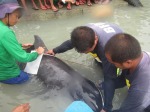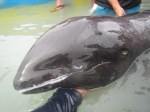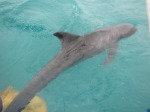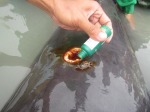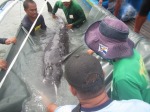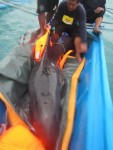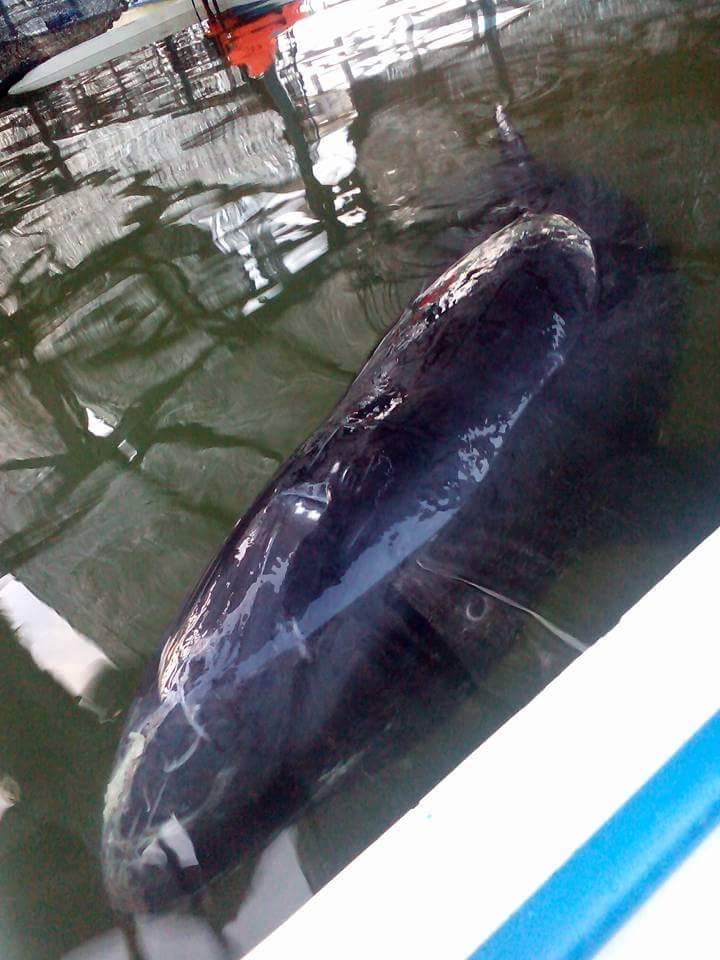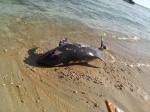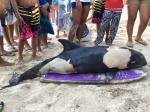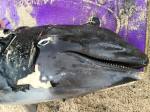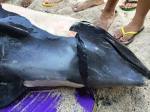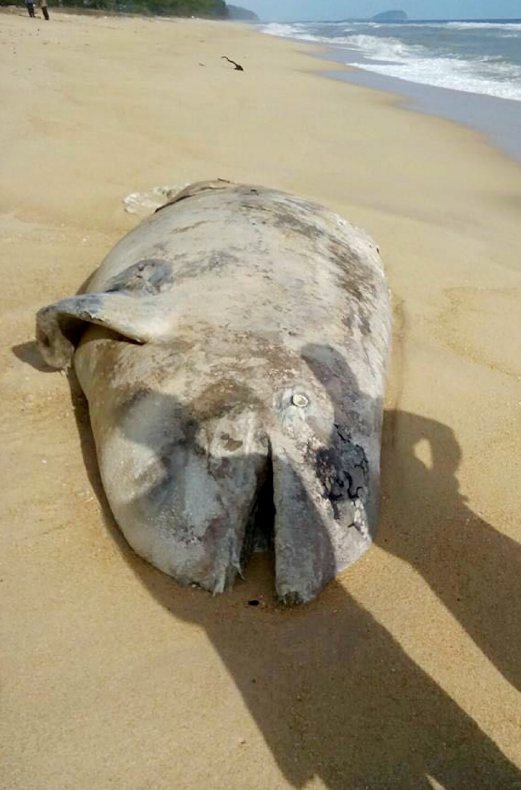
This photo posted by BFAR in its Facebook page shows rescuers treating the wounds of the female Whale that was stranded in the sea waters of Salcedo town in Eastern Samar. After the treatment and documentation, the mammal was released back to the sea on January 10, 2017.
Photo: BFAR
Philippines: Wounded Whale rescued in Eastern Samar
By Ricky J. Bautista, 13th January ;A wounded Melon-headed Whale (Peponocephala electra) stranded in Salcedo town in Eastern Samar was rescued and returned back to sea, the Bureau of Fisheries and Aquatic Resources (BFAR) regional office reported.
The BFAR said the local folk who discovered the Whale stranded in the seashore of Barangay Butig, Salcedo town around 9 a.m. of January 10 immediately alerted the authorities.
According to the first responders’ account, the Whale was seen swimming erratically near the shore of said village and was being followed by fishermen.
Sensing that the Whale might be in danger of being slaughtered, the unidentified concerned citizen sought help from Port Kennedy. Fearing the Whale will be killed and consumed, they brought the Whale on shore and called for assistance.
The rescuers said the Whale, measuring to about 2.5 meters in length and 1.25 girth at its fins, was very weak, stressed and had several contusions even in the eyes.
The BFAR team immediately treated the wounds. After four hours of treatment, the Whale was released back to sea, off Pearl Island in Guiuan, Eastern Samar.
“The release was considered successful by the rescuers, as the whale was observed to be strong again and swim faster than it was found stranded,” said one of the BFAR personnel.
Source: Sun.Star
